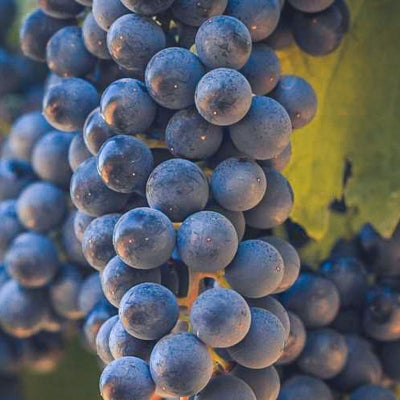
Grape school: Petit Verdot
Petit Verdot is a lesser-known, but increasingly appreciated, red grape variety that contributes depth and spice to some of the world's most prestigious wines, including adding a certain magic to the world’s finest Bordeaux blends.
Commonly found in the Bordeaux region of France, this grape is known for its intense color, tannic structure, and aromatic complexity, offering notes of dark fruits, flowers, and spices. Petit Verdot plays a crucial role in blends but is also making its mark as a varietal wine, showcasing the grape's unique characteristics.
Origins and history
Petit Verdot is believed to have been cultivated in Bordeaux for centuries, although it has historically been overshadowed by its more famous counterparts like Cabernet Sauvignon and Merlot. The grape's name, which translates to "little green one," references its tendency to ripen later in the season, often presenting challenges for growers. Despite this, Petit Verdot has been a key component in classic Bordeaux blends. Used in very small amounts, sometimes as little as 1-2% of a blend, it contributes color, tannin, and aromatic intensity, along with its trademark character of violet and sage.
Its late ripening was a drawback in Bordeaux's marginal climate, leading to its minor status; however, in warmer regions around the globe, the grape thrives, gaining popularity in places like California, Australia, and Spain.
Appearance and growing conditions
Petit Verdot vines produce small, thick-skinned berries with a deep blue-black hue. These characteristics are ideal for producing wines of deep color and high tannin. The grape prefers a warm, dry climate to ripen fully, which is why it has found a successful new home in various wine regions that offer more consistent heat and sunshine than Bordeaux. Its ability to withstand heat and drought makes it a valuable varietal for the changing global climate, allowing it to achieve optimal ripeness and express its full flavor potential.
Flavor profile
Petit Verdot brings rich, concentrated flavors that include blackberry, blueberry, and plum, combined with uniquely prominent floral notes of violet and lavender, and herbaceous notes of sage. When young, the wine can be intensely tannic and full-bodied, but it evolves beautifully with age, developing softer tannins and a more complex bouquet. As such a bold wine, Petit Verdot is commonly oaked aged to soften it, adding notes of vanilla, mocha, and occasionally smoke. The grape's natural acidity and structure make it an excellent candidate for aging, with mature bottles revealing layers of flavor and a velvety texture.
Food pairings
Due to its robust tannins and acidity, Petit Verdot pairs exceptionally well with rich, fatty foods that can soften its tannic edge. It is an excellent match for grilled or roasted red meats, game, and dishes with hearty, umami-rich sauces. The wine's floral and spicy notes also complement herb-crusted dishes and can stand up to the strong flavors of aged cheeses. Petit Verdot's intensity makes it a bold choice for pairing, capable of elevating a meal with its deep flavors and complexity.
Notable producers
Traditionally blended in small amounts in Bordeaux to add its characteristic magic, producers such as Pichon Lalande – who have the largest parcels of it in the Médoc – Palmer, and Lagrange are known for their inclusion of Petit Verdot in their Grands Vins. Similarly, Italy’s Maremma in Tuscany is a key growing region, and often Super Tuscan wines will include it in the blend, such as is the case with Le Pupille’s Saffredi.
Petit Verdot is also gaining prominence as a varietal wine in regions that can fully ripen the grape. In California, producers like Viader, Pride Mountain Vineyards, and Darioush have been noted for their exceptional Petit Verdot wines, showcasing the grape's potential outside its native France. Australia and Spain are also home to standout Petit Verdot single varietals, with producers exploring the depth and versatility of this grape in warm climates.
Conclusion
Petit Verdot may have started as a blending grape in Bordeaux, but its journey across the wine world has highlighted its potential as a star in its own right. With its rich color, complex aromatics, and ability to age gracefully, Petit Verdot offers a distinctive experience for wine enthusiasts.
Want to read more? Take a look at some of our other blogs:
Also in News

Discover Mendoza in six wines

Hospices de Beaune auction 2025: Inside the world’s oldest charity wine auction
One of the most exciting events in the international wine calendar

